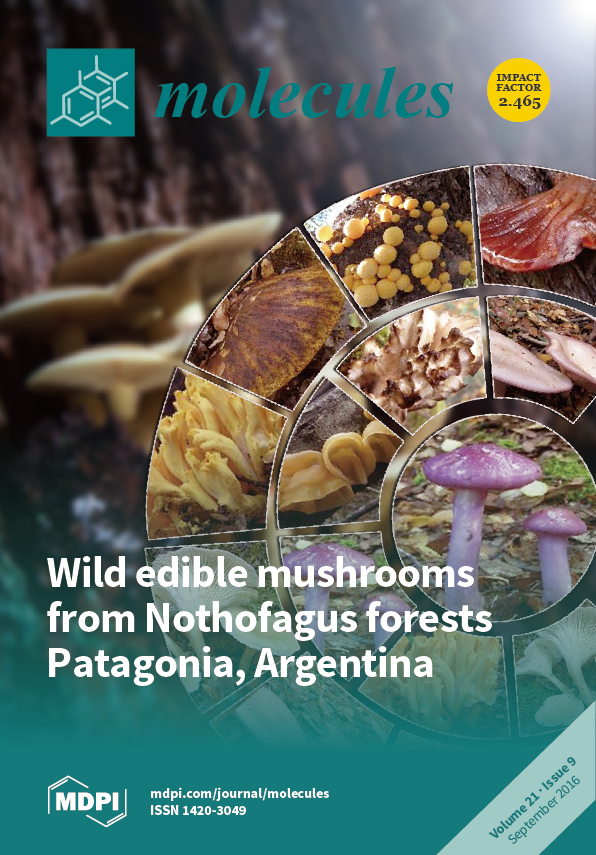The role of the 6″-OH (ω-OH) group in the antioxidant activity of flavonoid glycosides has been largely overlooked. Herein, we selected quercitrin (quercetin-3-
O-rhamnoside) and isoquercitrin (quercetin-3-
O-glucoside) as model compounds to investigate the role of the 6″-OH group in several
[...] Read more.
The role of the 6″-OH (ω-OH) group in the antioxidant activity of flavonoid glycosides has been largely overlooked. Herein, we selected quercitrin (quercetin-3-
O-rhamnoside) and isoquercitrin (quercetin-3-
O-glucoside) as model compounds to investigate the role of the 6″-OH group in several antioxidant pathways, including Fe
2+-binding, hydrogen-donating (H-donating), and electron-transfer (ET). The results revealed that quercitrin and isoquercitrin both exhibited dose-dependent antioxidant activities. However, isoquercitrin showed higher levels of activity than quercitrin in the Fe
2+-binding, ET-based ferric ion reducing antioxidant power, and multi-pathways-based superoxide anion-scavenging assays. In contrast, quercitrin exhibited greater activity than isoquercitrin in an H-donating-based 1,1-diphenyl-2-picrylhydrazyl radical-scavenging assay. Finally, in a 3-(4,5-dimethylthiazol-2-yl)-2,5-diphenyl assay based on an oxidatively damaged mesenchymal stem cell (MSC) model, isoquercitrin performed more effectively as a cytoprotector than quercitrin. Based on these results, we concluded that (1) quercitrin and isoquercitrin can both indirectly (i.e., Fe
2+-chelating or Fe
2+-binding) and directly participate in the scavenging of reactive oxygen species (ROS) to protect MSCs against ROS-induced oxidative damage; (2) the 6″-OH group in isoquercitrin enhanced its ET and Fe
2+-chelating abilities and lowered its H-donating abilities via steric hindrance or H-bonding compared with quercitrin; and (3) isoquercitrin exhibited higher ROS scavenging activity than quercitrin, allowing it to improve protect MSCs against ROS-induced oxidative damage.
Full article






